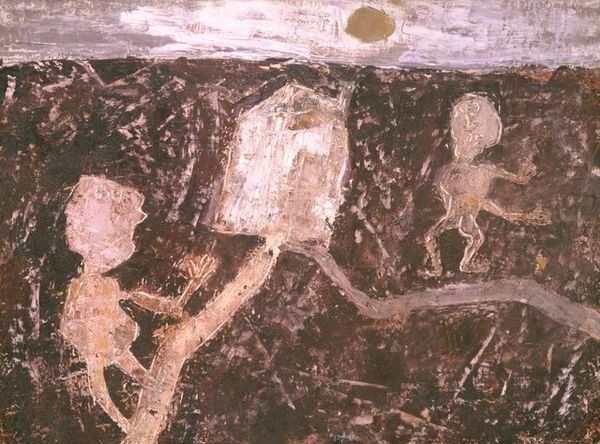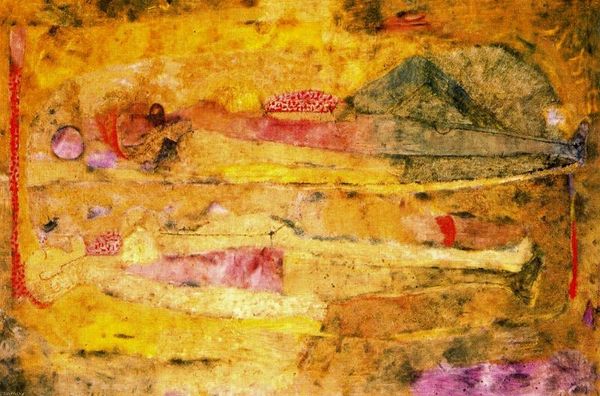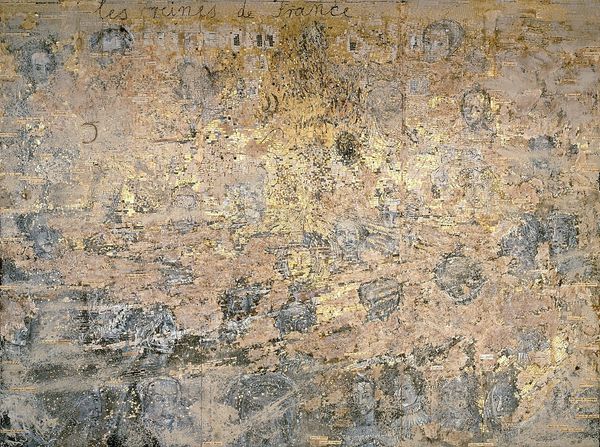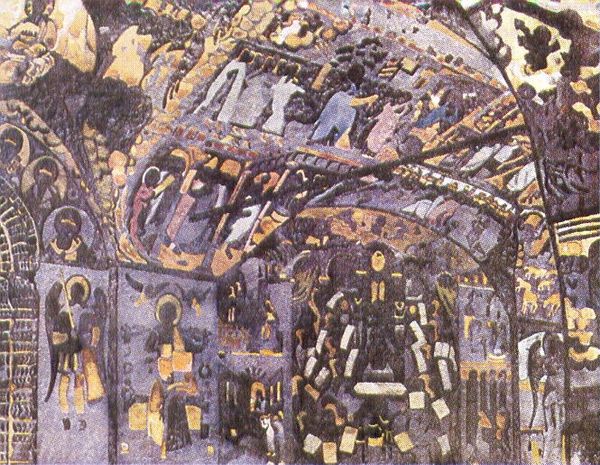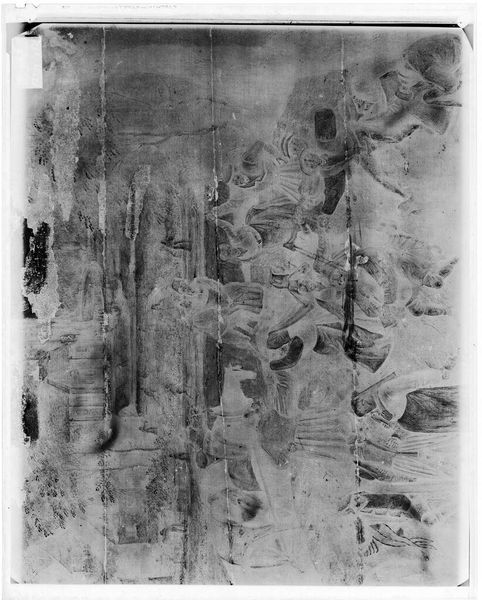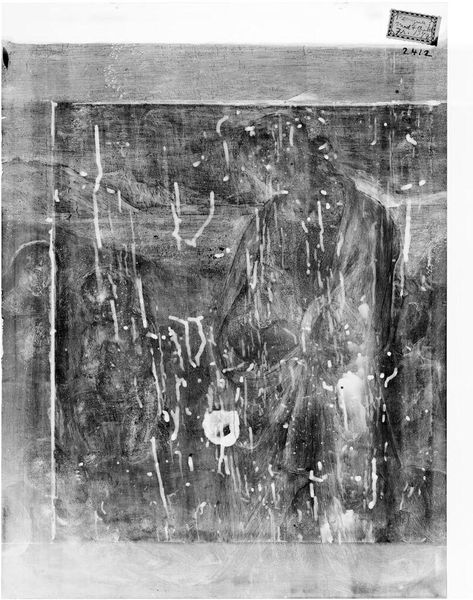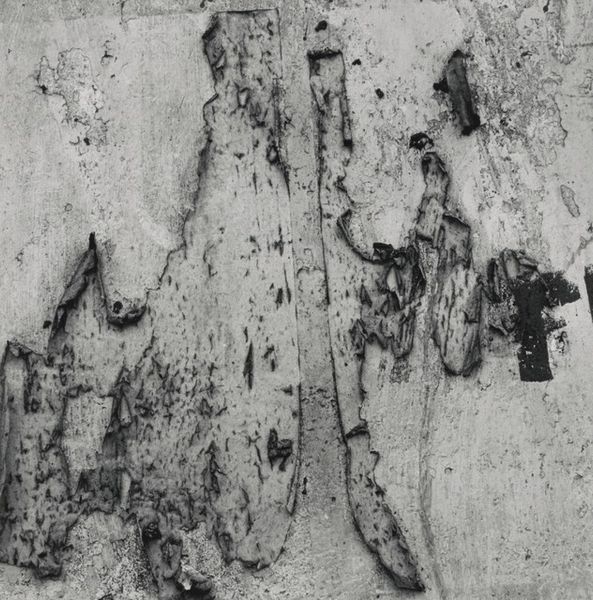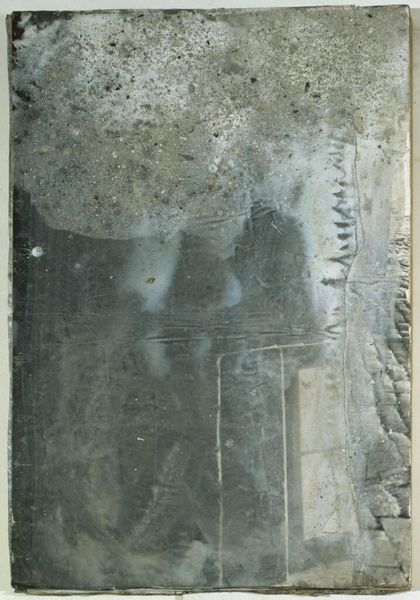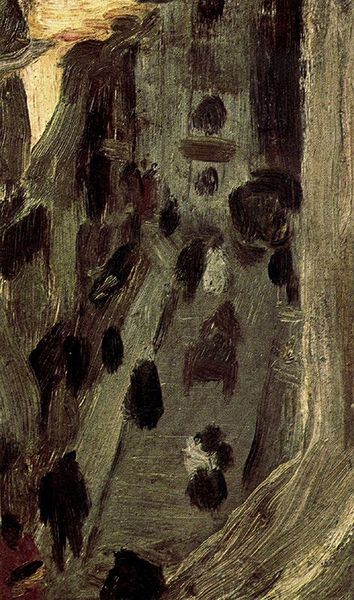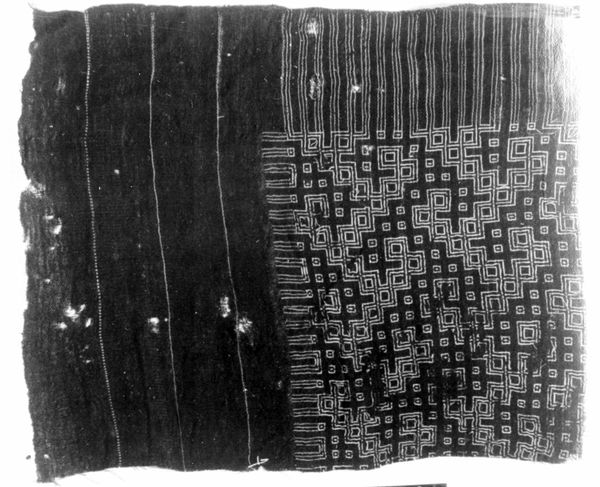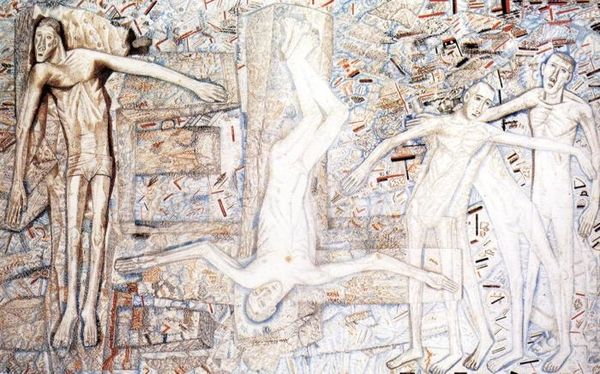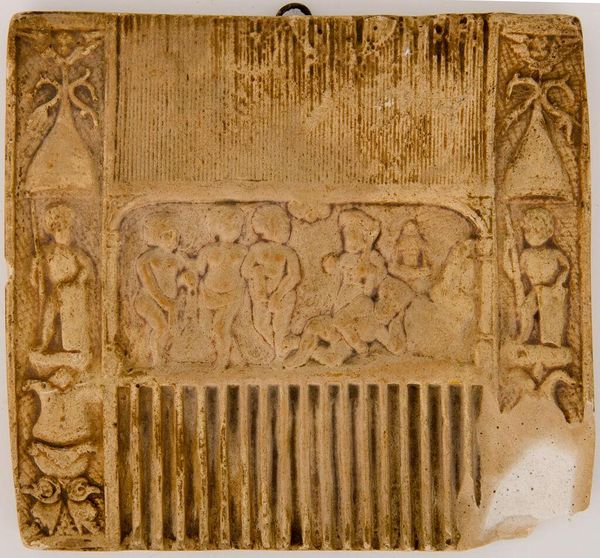
Dimensions: 45.72 x 27.31 cm
Copyright: Public domain
Curator: This is Maurice Prendergast's "St. Mark's Lion, Venice," created around 1899 using watercolor. The work captures a bustling Venetian scene under a diffused, dreamy light. Editor: My immediate impression is the sense of captured energy; the painting vibrates with movement, a city alive after dark. Curator: Absolutely, and the Lion of St. Mark, the symbol of Venice, stands tall, almost guarding the scene. The winged lion represents the apostle Saint Mark, Venice’s patron saint, symbolizing both power and divine authority. Its presence is not merely decorative; it's integral to Venetian identity. Editor: I see that, but I also see the inherent contradiction—a symbol of power looming over what seems like an emerging public, perhaps even a challenge to authority embodied in the citizenry gathering below. This image emerges just as social and political reform starts taking off in the first decade of the 20th century. Curator: A fair point, considering the rise of modernist ideas and challenging traditional hierarchies around that time! Prendergast simplifies the form of the lion, reducing it to a silhouette, which enhances its iconic value while downplaying its specific details. But look how Prendergast uses light. Golden spots illuminate the canals and highlight the figures gathered, yet do they bring clarity? Or do they conceal as much as they reveal? Editor: Exactly! The ambiguity is palpable, echoing the era’s uncertainty. Are these shadows indicators of an unseen element shaping social realities? Curator: The lack of detail almost turns the people into a sea of faces. Consider too the impressionistic technique at play. By focusing on light and color, rather than precise rendering, Prendergast distills the essence of Venice to a fleeting, atmospheric experience. Editor: The artist encourages the viewer to project their interpretations onto the scene. Perhaps this bustling energy becomes representative of marginalized communities mobilizing within urban spaces. Curator: So the lion then becomes not just a symbol of the state but perhaps also an inadvertent witness to social ferment? It makes one wonder what other stories are embedded within these luminous impressions of Venice. Editor: Precisely. Viewing the artwork through this lens invites questions about our place in spaces marked by tradition and shifting social landscapes. Curator: A vivid testament to how historical symbols become vessels of evolving meanings. Editor: Indeed—an image ripe with both visual delight and historical questioning.
Comments
No comments
Be the first to comment and join the conversation on the ultimate creative platform.
